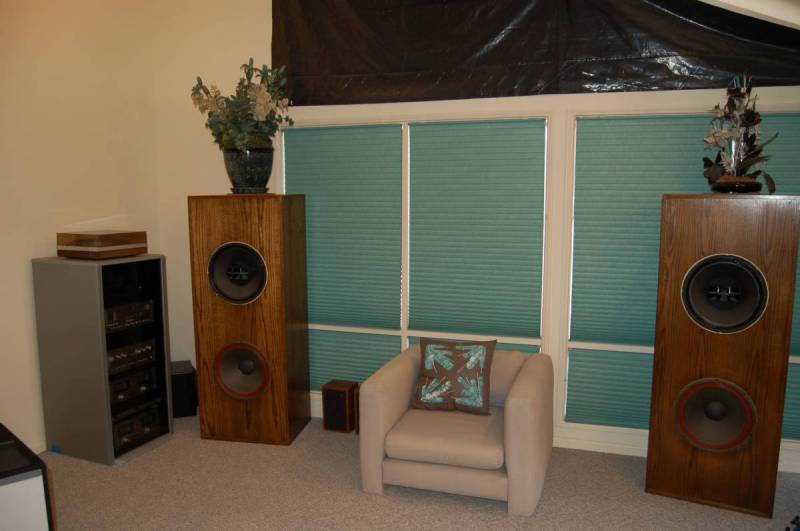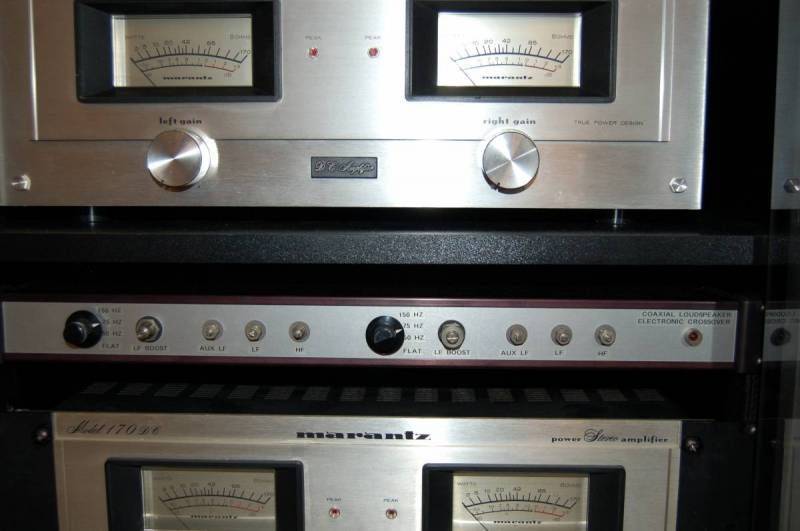I rarely listen to my tri-amped set-up, partially because of the seating logistics.
Mine is vintage (Super Big Reds) with Marantz amps, and I prefer the Mermans that I created (JBL 18", JBL 10", Heil AMT) with passive crossovers. But then, I designed these in the room in which they are used and am extremely careful in how I match parts in the crossovers, of my own design.
The tri-amped setup uses the Super Big Reds (Altec 604E2/Utah aux woofer) that I purchased from a recording studio. These are one-off in furniture-grade oak cabinets. The analog electronic crossover was designed for this assemblage and is also a one-off. There are also passive eq units that go between the amp and the horn drivers.
The amps include two Marantz 170DCs for the four woofers and a Marantz 1180DC integrated for the preamp and to power the horn drivers. I also have the matching Marantz 2130 tuner with the built-in O-scope.
This set-up could be had..., but I am on the left coast. I was trying to track their history, but Doug Sax had died a couple years prior to when I got them.






